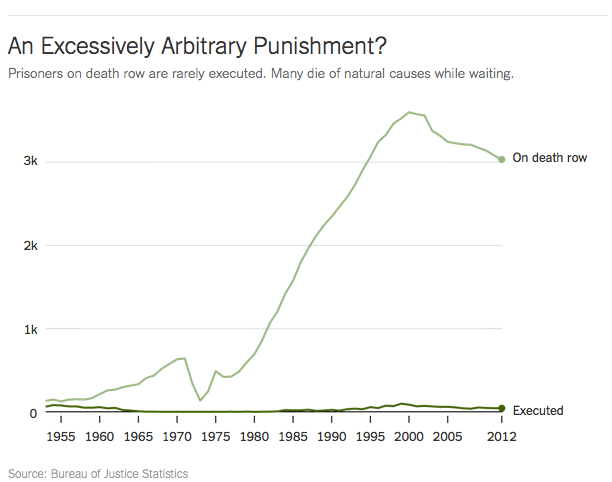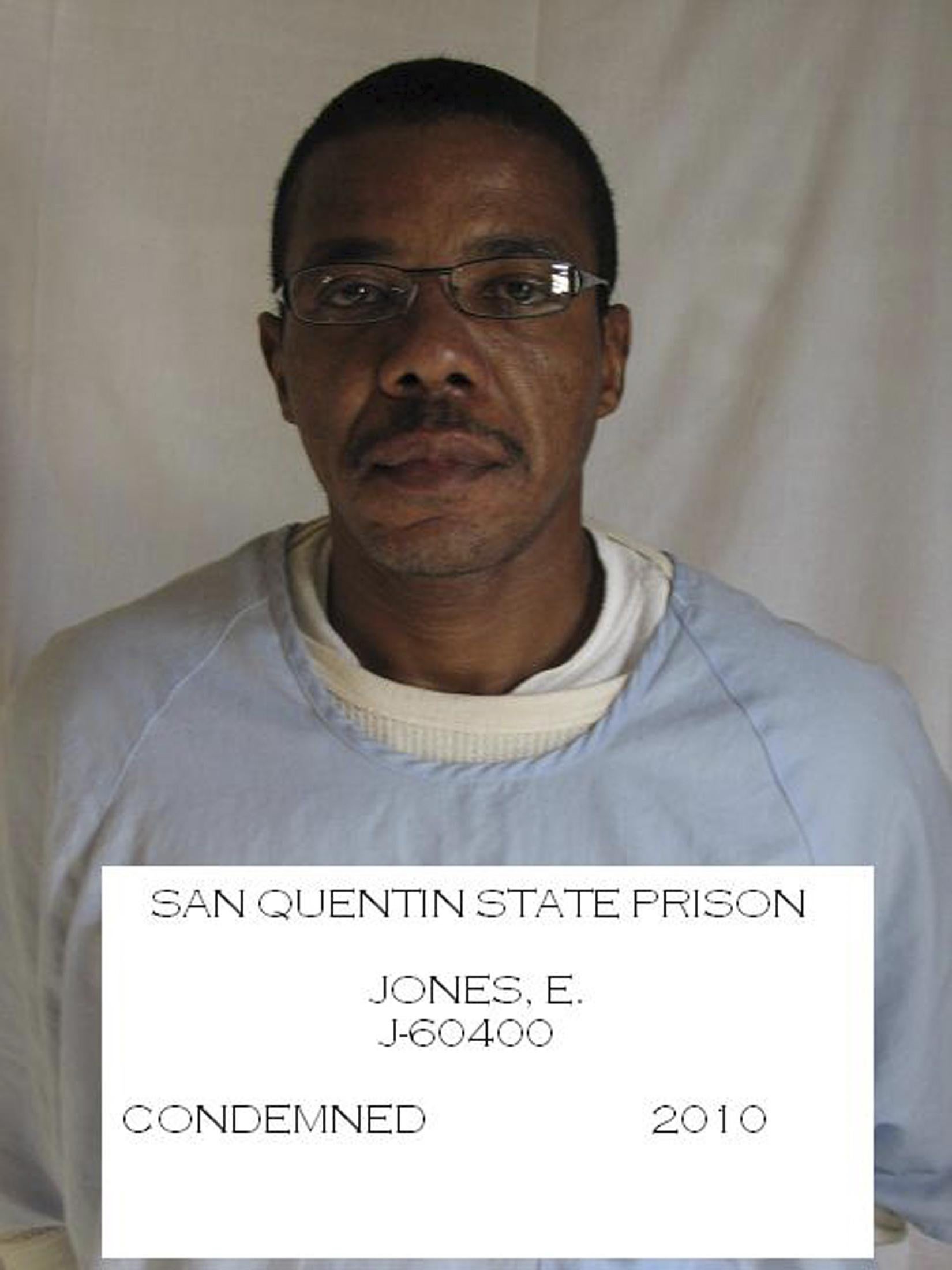On the heels of a California judge’s ruling that the state’s death penalty is unconstitutional because its death sentences are so rarely and arbitrarily carried out, the New York Times’ Upshot site looks at the large disparity nationwide between the number of convicts sent to death row and the number that are actually executed.

New York Times
With over 3,000 individuals on death row and the country executing about 50 prisoners a year, it would take around 60 years just to close all current death penalty cases. Many convicts die of natural causes before their sentences are carried out—and Times writer Justin Wolfers, an economist, points to a study that suggests life inside prison might actually be safer than life outside it for the demographic of (ostensibly) violent and unhealthy individuals who end up on death row. Wolfers calls the slow rate of executions a “political equilibrium” for a citizenry that supports executions in theory but is made uncomfortable by actually seeing them carried out—and by his estimate, if we actually captured and executed everyone who committed a crime hypothetically punishable by death, there would be around seven executions in the United States every day.
For a look at why death penalties take so long to carry out, click here.
